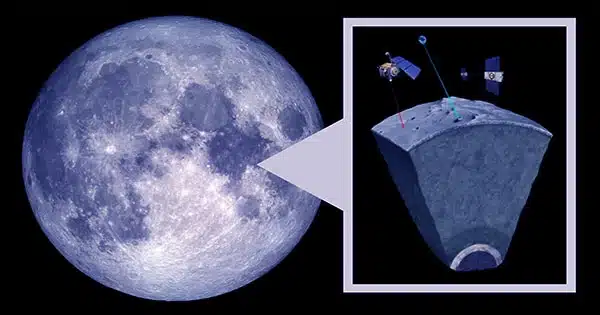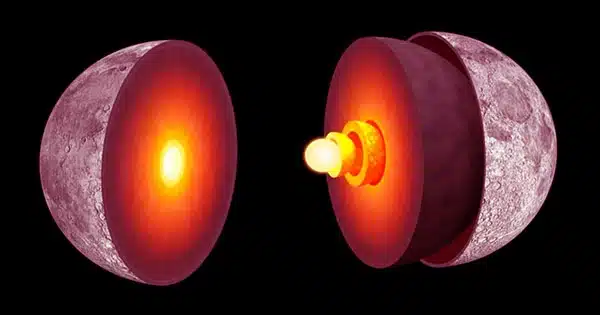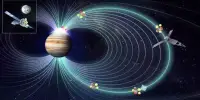The Apollo Program launched the first astronauts to the Moon about fifty years ago. Along with the numerous scientific investigations they carried out on the moon’s surface, the Apollo astronauts also took back samples of lunar rock for examination. Around the same time as it launched sample-return missions, the Soviet Luna program launched a number of robotic missions to the Moon. The analysis of these rocks provided significant insight into the makeup of the Moon and produced novel hypotheses regarding the formation and development of the Earth-Moon system.
For example, a rock study found that the Earth and Moon are both made up of silicate minerals and metals. This sparked speculation that the Moon’s interior is also separated into a silicate mantle and crust and a metallic core. However, several features of this idea, such as the core’s structure (solid or molten? ), have been hotly contested for decades. According to fresh findings by a team of French scientists, the Moon’s innermost part consists of a solid inner core surrounded by a molten outer core (similar to Earth’s).
Arthur Briaud, a postdoctoral researcher at the Observatoire de la Côte d’Azur, led the study. Researchers from the CNRS, the Institute for Celestial Mechanics and Calculations (IMCCE), the Université Côte d’Azur, the Côte d’Azur Observatory, the Sorbonne Université, the Paris Sciences et Lettres University, and the Paris Observatory joined him. The study describing their findings, “The lunar solid inner core and the mantle overturn,” was published in the journal Nature recently.

Scientists constructed seismological models based on the examination of Apollo Moon rocks and other lunar samples, which offered the first records of the Moon’s interior structure. These models revealed reduced seismic wave velocities at the core-mantle border, providing the first indication that the lunar core may be similar to Earth’s. The resolution of the seismic data, however, prohibited a good picture of the Moon’s interior structure, which included the presence of a solid core and the migration of mantle material through time.
Several approaches (such as the Moon’s spin) were employed roughly twenty years ago to demonstrate the presence of a fluid outer core, but the inner core remained invisible due to its small size. Briaud and his colleagues relied on geophysical and geodesic data from several satellite missions, as well as lunar laser ranging, for their research. They used this in conjunction with Monte Carlo and thermodynamic simulations to investigate various internal structures. The findings supported the existence of a solid inner core measuring around 500 km (310 mi) in diameter, or roughly 15% of the total size of the Moon.
Their findings also suggested that the inner core has a density similar to that of iron, most likely iron-nickel (the same as Earth’s). Furthermore, their findings offer light on the role of mantle convection in the evolution of the Moon. The existence of iron-rich materials on the Moon’s surface is explained by this process, in which the bottom and top layers of a mantle switch locations due to the lower layer being less thick. This material, they say, might have risen to the surface, forming volcanic rocks that were deposited in the lunar crust.
These same materials may have been too dense in comparison to the surrounding material, sinking back to the core-mantle barrier. The researchers also believe this happened during the first billion years of the Solar System (about 4.6 to 3.6 billion years ago). As a result, their findings assist to narrow the timeframe of significant events in the Moon’s evolutionary history, such as the Late Heavy Bombardment and the disappearance of the Moon’s magnetic field (which was once 100 times stronger than Earth’s).
















